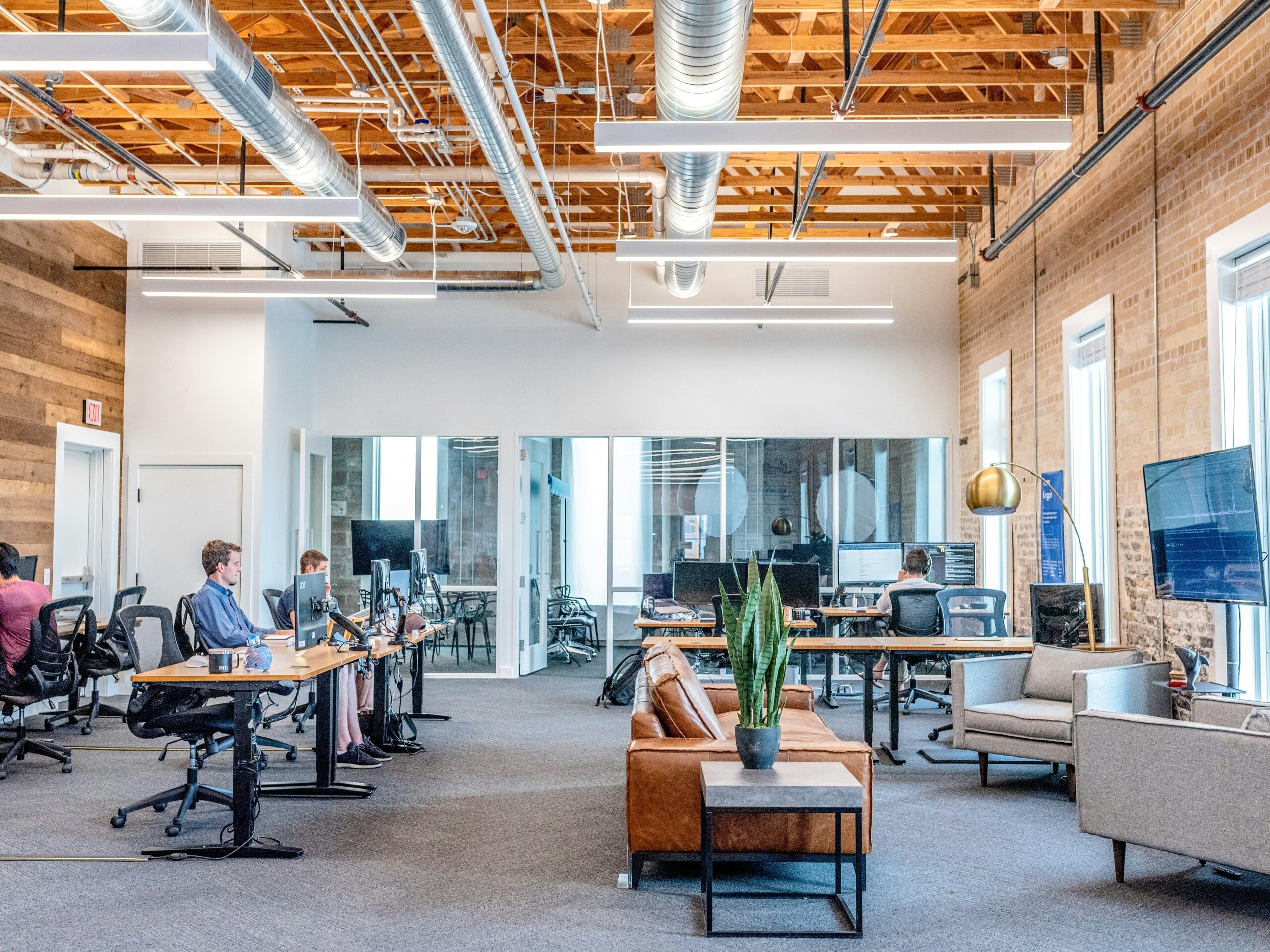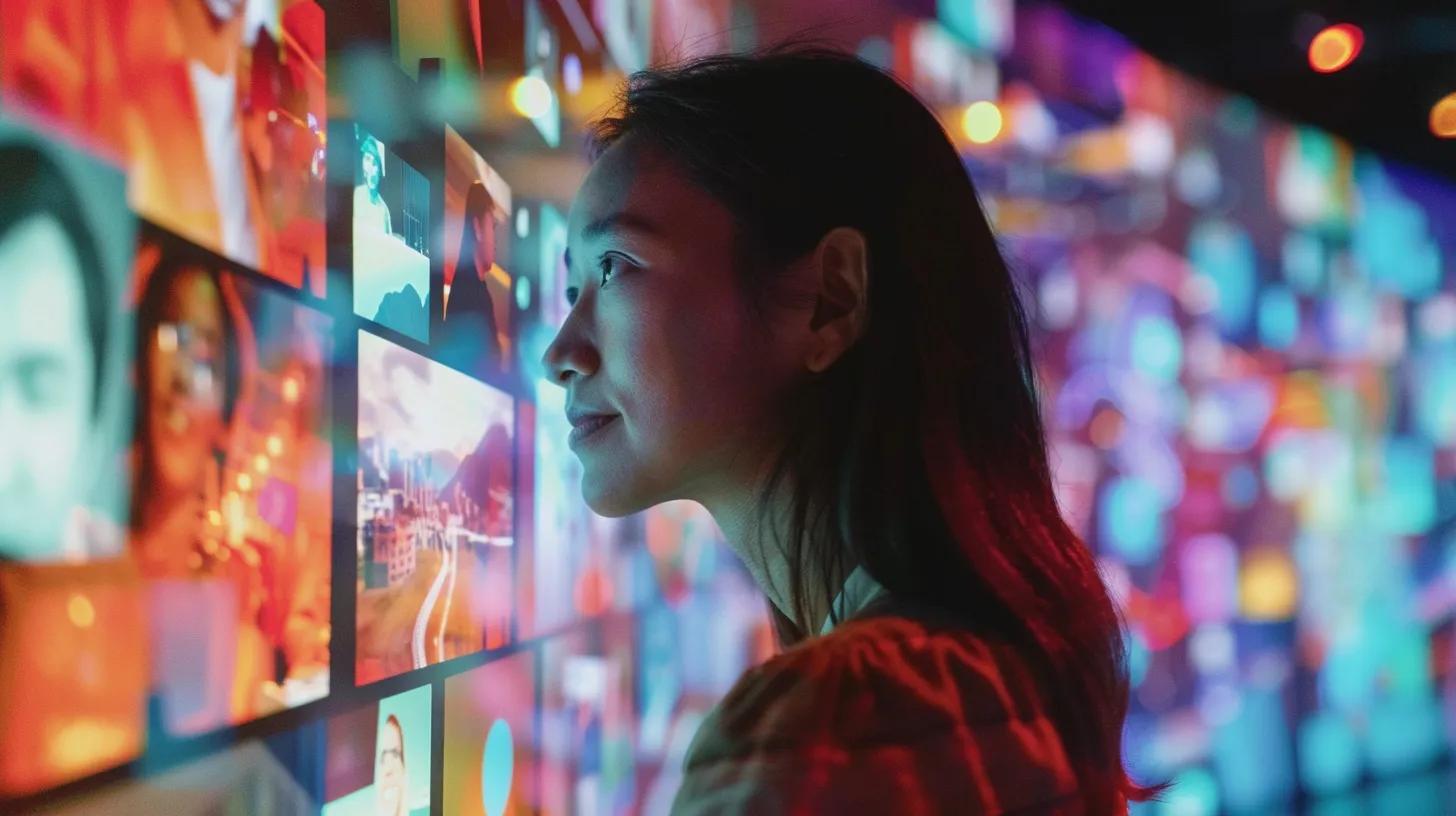Are you struggling to choose between a local or national UX design agency for your business? This article will help you understand the key differences between these two options. We’ll explore the benefits of local agencies, including personalized service and local market knowledge, as well as the advantages of national agencies, such as broader expertise and resources. By the end, you’ll have the information you need to make the best choice for your company’s UX design needs.
Key Takeaways
- Local agencies offer regional expertise and closer client relationships
- National agencies provide broader talent pools and diverse market experience
- Hybrid approaches combine strengths of local and national agencies
- Remote collaboration tools are blurring lines between local and national services
- Globalization influences agency selection, creating a more competitive UX design landscape
Understanding the Concepts of Local and National UX Design Agencies

Local UX design agencies operate within a specific geographical area, often catering to businesses in their immediate vicinity. These agencies typically deeply understand local markets, including insurance and advertising trends, which can be advantageous for region-specific projects.
National UX design agencies, on the other hand, serve clients across the country and sometimes internationally. They often have diverse teams with expertise in various industries, including university-level research and empathy-driven design approaches. This breadth of experience can be beneficial for large-scale or complex projects.
Both types of agencies conduct user research and employ empathy-based design methods to create effective user experiences. The choice between local and national agencies depends on project scope, budget, and specific industry needs, such as specialized insurance or advertising expertise.
Evaluating the Benefits of Engaging a Local UX Design Agency

Engaging a local UX design agency offers several advantages for businesses. These include proximity for easier collaboration, in-depth knowledge of local market trends, and stronger relationships with clients. Local agencies often excel in understanding regional user experience design needs, which can enhance the software development process and improve navigation for local users. Their familiarity with local cultures, including Chinese communities, can be valuable in brainstorming sessions and design solutions.
Proximity and Personal Interaction
Local UX design agencies offer the advantage of proximity, allowing for face-to-face meetings and personal interactions. This close relationship fosters better communication and collaboration, which is particularly valuable when conducting user research or developing brand strategies. In countries like France, where cultural nuances play a significant role in technology adoption and social media usage, local agencies can provide insights that are crucial for creating user-centered designs tailored to specific regional preferences.
In-depth knowledge of Local Market Trends
Local UX design agencies possess an in-depth understanding of regional market trends, which proves invaluable in creating effective marketing strategies. Their knowledge of local customer behaviors and preferences allows for more targeted design iteration. This expertise extends to understanding local leadership styles and even cultural connections to animals, which can influence design decisions. The result is often a more finely tuned user experience that resonates with the local audience:
- Deep understanding of regional customer behaviors
- Familiarity with local leadership styles
- Awareness of cultural nuances, including animal symbolism
- Ability to iterate designs based on local market feedback
Easier Collaboration and Communication
Local UX design agencies facilitate easier collaboration and communication with clients. This proximity allows for quick face-to-face meetings, enhancing project management and enabling swift adjustments to computer interfaces based on target audience feedback. Local agencies can provide invaluable insights and responsive communication channels in countries like China, where sports-related design projects may require nuanced cultural understanding.
Building Stronger Relationships With Local Clients
Local UX design agencies excel at building stronger relationships with local clients through their deep understanding of regional business practices and cultural nuances. This enhanced connection facilitates better learning of client needs and fosters a shared concept of success. The agency’s grasp of local accounting standards and business dimensions allows for more tailored solutions, resulting in UX designs that resonate with the target audience:
Exploring the Advantages of a National UX Design Agency

National UX design agencies offer distinct advantages, including access to a broader talent pool and diverse market experience. These agencies leverage advanced technologies and resources to enhance usability and API integration. Their expertise in maintaining brand consistency across locations while considering cultural factors can improve password security and user motivation. The following sections explore these benefits in detail.
Access to a Broader Talent Pool
National UX design agencies offer access to a broader talent pool, enabling them to assemble diverse teams with specialized knowledge in various aspects of UX design. These agencies can draw from talent across different regions to create comprehensive teams that bring a wide range of expertise to each project. This diversity allows for more innovative approaches to app development, email address integration, and emotion-driven design solutions:
Diverse Experience Across Different Markets
National UX design agencies leverage their diverse experience across different markets to create comprehensive user experiences. Their exposure to various industries allows them to identify best practices and innovative solutions that can be applied to achieve specific goals for target markets. This broad perspective enables them to design intuitive menus, create user-friendly documents, and optimize overall user experiences across different platforms and devices.
Advanced Technologies and Resources
National UX design agencies often have access to advanced technologies and resources, enabling them to create sophisticated prototypes and gather extensive data for cultural insights. These agencies can leverage powerful tools for user feedback collection and analysis, informing design decisions that resonate with diverse audiences. Their ability to present comprehensive reports to boards of directors supports strategic decision-making in UX design projects:
Consistency in Branding Across Various Locations
National UX design agencies excel at maintaining brand consistency across various locations, addressing the problem of fragmented brand identity. They employ specialized tools for design localization, ensuring that branding elements remain cohesive while adapting to regional preferences, including currency and language differences. This approach enables companies to present a unified image globally while still resonating with local audiences, enhancing user experience and brand recognition.
Key Differences in Service Offerings

Local and national UX design agencies differ in their service offerings, reflecting their unique approaches to design processes and methodologies. This section explores key differences in customization versus scalability, niche market specialization, service range, and pricing structures. These factors influence agency behavior, community impact, and client salaries, affecting the choice between local and national providers.
Customization vs. Scalability
Local UX design agencies excel in customization, tailoring their services to specific client needs and local markets. They often provide personalized online chat support and gather detailed information about regional preferences to inform their development process. National agencies, on the other hand, focus on scalability, leveraging their experience with meta platforms and the English language to create solutions that can be deployed across diverse markets. This scalable approach allows national agencies to efficiently handle larger projects and implement consistent user experiences across multiple regions.
Specialization in Niche Markets
Local UX design agencies often specialize in niche markets, catering to specific industries or regional needs. Local agencies usually focus on software design for tech startups or environmental organizations, leveraging their understanding of the state’s unique business landscape. National agencies, while having broader expertise, may not offer the same level of specialization. However, they can tap into a larger network of designers and resources, potentially connecting clients with specialized chapters or volunteering opportunities that align with their niche requirements.
Range of UX Services Provided
National UX design agencies typically offer a broader range of services compared to local agencies, often including extensive user research, accessibility testing, and comprehensive design systems. Their larger teams allow for specialized roles, such as dedicated UX researchers and interaction designers, enabling them to handle complex projects that require significant investment. Local agencies, while potentially more limited in scope, may excel in providing personalized services, such as in-depth designer interviews and tailored user perception studies. Both types of agencies strive to create accessible and user-friendly designs, but their approaches and resource allocation may differ based on their size and specialization.
Pricing Structures and Contract Flexibility
Pricing structures and contract flexibility differ significantly between local and national UX design agencies. Local agencies often offer more flexible pricing models and shorter contract terms, allowing clients to engage in user interface projects or mobile app development without long-term commitments. National agencies, with their larger teams and resources, typically have more standardized pricing structures and longer contracts, which can benefit complex projects requiring extensive usability testing and problem-solving. Both agency types strive to align their pricing with the value they provide to society through improved user experiences, but their approaches to cost and contract negotiations reflect their distinct operational scales and client bases.
Case Studies of Local and National UX Agency Successes

Case studies showcase the successes of local and national UX design agencies across various scenarios. Local agency stories highlight their impact on customer engagement and education in specific regions. National agency examples demonstrate their ability to handle large-scale projects, considering factors like gender and adoption rates. Comparing outcomes reveals the average effectiveness of each approach in different contexts.
Highlighting Local Agency Success Stories
Local UX design agencies have achieved notable successes by leveraging their deep understanding of regional markets and end-user preferences. In one case, a local agency in Dallas combined graphic design expertise with advanced analytics to create a user-friendly interface for a space exploration educational app. The project management team collaborated closely with local educators, resulting in a 40% increase in user engagement and improved learning outcomes. This success demonstrated the agency’s ability to tailor solutions to specific community needs while effectively managing project timelines and budgets.
Showcasing National Agency Impact
National UX design agencies have demonstrated their impact through large-scale projects that showcase their expertise in information architecture and entrepreneurship. One notable example involves a national agency collaborating with a multinational corporation to redesign their global e-commerce platform. The agency’s diverse team of developers applied their skills to create a unified user experience across multiple countries, enabling seamless navigation and improving conversion rates by 25%. This project highlighted the agency’s ability to handle complex, multi-faceted challenges while maintaining consistency in design and functionality across various markets.
Comparing Outcomes Across Different Scenarios
Comparing outcomes across different scenarios reveals that local and national UX design agencies each have unique strengths. In New Zealand, a local agency’s intimate knowledge of Maori culture led to a more authentic user experience for a health website, resulting in higher engagement rates. Conversely, a national agency’s expertise in information architecture allowed for the creation of a complex, multi-language website for a global architecture firm, showcasing their ability to handle large-scale projects effectively.
Making the Right Choice for Your Business

Choosing between local and national UX design agencies requires careful consideration of an organization’s needs. This section guides businesses through assessing specific requirements, determining target audiences, evaluating budget constraints, and aligning with long-term goals. Understanding these factors helps in selecting the right agency for software development and interaction design projects, regardless of language or scale.
Assessing Your Company’s Specific Needs
Assessing a company’s specific needs is crucial when choosing between local and national UX design agencies. Organizations should evaluate their project scope, target audience, and industry requirements to determine which type of agency aligns best with their goals. For instance, a company developing a localized e-commerce platform might benefit from a local agency’s regional insights, while a business launching a nationwide mobile app may find a national agency’s broader experience more suitable. Considering project complexity, desired cultural relevance, and required technical expertise helps businesses make informed decisions supporting their UX design objectives.
Determining Your Target Audience
Determining the target audience is crucial when choosing between local and national UX design agencies. Companies must analyze their user base, considering factors such as geographic distribution, cultural preferences, and technological habits. This analysis helps in deciding whether a local agency’s regional expertise or a national agency’s broader perspective better serves the project’s needs. For example, a business targeting users in a specific city might benefit from a local agency’s insights, while a company aiming for a diverse, nationwide audience may find a national agency more suitable:
Evaluating Budget Constraints
Evaluating budget constraints is a critical factor when choosing between local and national UX design agencies. Companies must assess their financial resources and project requirements to determine the most cost-effective option. Local agencies often offer competitive rates for region-specific projects, while national agencies may provide more value for complex, large-scale initiatives. Organizations should consider the following factors when evaluating their budget:
- Project scope and complexity
- Required expertise and resources
- Long-term cost implications
- The potential return on investment
Long-Term Goals and Growth Expectations
Considering long-term goals and growth expectations is crucial when selecting between local and national UX design agencies. Companies must evaluate their future expansion plans, potential market reach, and scalability requirements. A local agency might be suitable for businesses focusing on regional growth, while national agencies often provide better support for companies aiming to expand across multiple markets or industries. Organizations should assess how their chosen agency aligns with their long-term vision, ensuring the partnership can adapt to evolving needs and support sustainable growth.
Future Trends in UX Design Agency Selection

The UX design agency landscape is evolving, with new trends shaping selection processes. Hybrid approaches combine local and national agency strengths. Remote collaboration technologies enable wider talent access. Globalization impacts local markets, influencing agency roles. These trends are changing how businesses choose and work with UX design agencies.
The Rise of Hybrid Approaches
The UX design industry is witnessing a rise in hybrid approaches that combine the strengths of both local and national agencies. These hybrid models allow businesses to benefit from the regional expertise of local agencies while leveraging the broader resources and capabilities of national firms. By partnering with hybrid agencies, companies can access specialized knowledge for specific markets while maintaining the scalability and technological advantages typically associated with larger national agencies.
Embracing Remote Collaboration Technologies
Remote collaboration technologies are transforming the UX design agency landscape, blurring the lines between local and national service providers. These tools enable seamless communication and project management across distances, allowing agencies to tap into global talent pools while maintaining close client relationships. As a result, businesses can now access specialized expertise regardless of geographic limitations, potentially leading to more diverse and innovative design solutions:
- Video conferencing platforms facilitate face-to-face interactions
- Cloud-based design tools enable real-time collaboration
- Project management software streamlines workflow across time zones
- Virtual reality technologies enhance remote user testing capabilities
The Impact of Globalization on Local Markets
Globalization is reshaping local markets in the UX design industry, influencing how businesses select agencies. As international design standards and practices spread, local agencies are adapting to global trends while maintaining their regional expertise. This shift is creating a more competitive landscape, where local agencies must offer unique value propositions to stand out against national and international competitors. The result is a dynamic market where businesses can benefit from a blend of local insights and global best practices in UX design.
Conclusion
The choice between local and national UX design agencies hinges on a careful evaluation of a company’s specific needs, target audience, budget constraints, and long-term goals. Local agencies offer deep regional insights and personalized service, while national agencies provide broader expertise and scalable solutions for larger projects. The rise of hybrid approaches and remote collaboration technologies is blurring the lines between local and national offerings, creating new opportunities for businesses to access specialized skills regardless of location. Ultimately, the decision requires a thorough understanding of the unique strengths each type of agency brings to the table, ensuring the selected partner can effectively support the company’s UX design objectives and contribute to its overall success.
